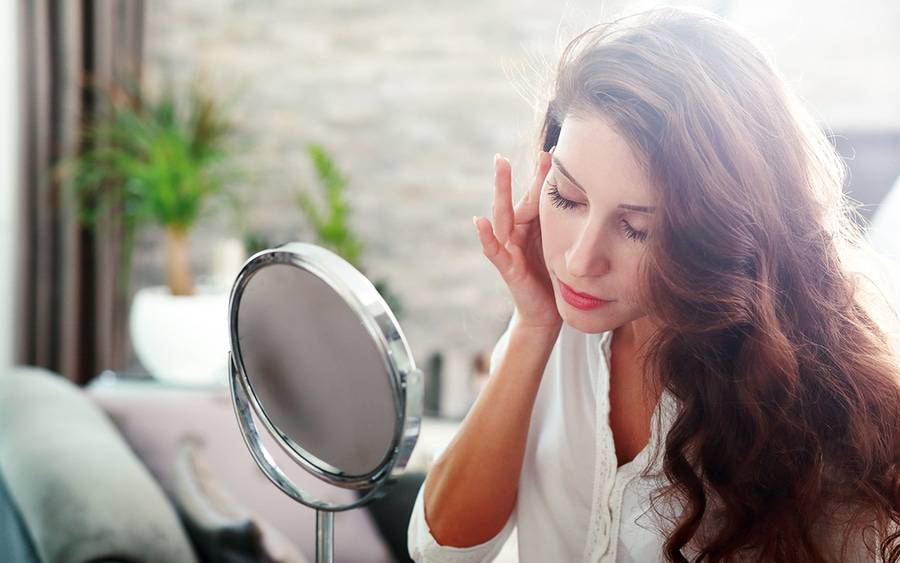Freshen Up Your Face with Cosmetic Dermatology
How to get healthy skin appearance without invasive surgery

How to get healthy skin appearance without invasive surgery
From sun damage and acne scars to wrinkles and sagging skin, life can take a toll on your appearance.
If you’d like to freshen up your face without invasive surgery, there are many non-surgical treatments and therapies within the field of cosmetic dermatology that can improve your skin texture and appearance quickly and cost-effectively.
“We can treat a full range of skin concerns non-invasively right in our offices, often with minimal downtime,” says E. Victor Ross, MD, a cosmetic dermatologist at Scripps Clinic Carmel Valley. “The changes are subtle but very effective, so you still look like yourself, but with a younger, fresher appearance.”
Here’s an overview of treatments to remove dark spots, even out skin tone, reduce wrinkles, tighten and smooth skin and more.
Filler injections
It’s inevitable. Over time, skin loses volume and becomes thinner, allowing fine lines and wrinkles to form. Gravity pulls loose skin down, leaving nasolabial folds between the nose and mouth and jowls around the jawline. Frown lines and laugh lines become more prominent as well.
Injectable dermal fillers treat volume loss by injecting substances, such as hyaluronic acid and collagen, into the skin to replace volume and plump up tissue. This gives a fuller appearance to the skin, which softens lines and fills in contours to give a more youthful appearance. Injectable fillers have no downtime and last for several months. Popular brands include Juvederm, Radiesse, Belotero and Restylane.
Anti-wrinkle injections
Wrinkles and fine lines often form across the forehead and around the eyes, which can make you look more serious, tired or older than you’d like. Botulinum toxin injections temporarily reduce or eliminate fine lines and wrinkles by blocking signals from the nerve to the targeted muscle. This stops the muscle from contracting, so you cannot make the expressions that emphasize lines and wrinkles.
Most commonly used to treat forehead lines, vertical lines between the eyebrows and crow’s feet around the eyes, injectable toxins take just minutes to perform with no downtime. Most people see improvement in wrinkles and lines within a day to two weeks.
Popular botulinum toxin injections include Botox, Dysport, Jeuveau, and Xeomin. The results last for about three months before they begin to wear off, so you’ll want to make sure they are done correctly.
“We advise people to have injectable toxin treatments done at a dermatologist’s office,” says Dr. Ross. “It is important to know exactly which nerves to treat to create a balanced, natural look and avoid lopsided results or a completely ‘frozen’ forehead for several months.”
Chemical peels
Chemical peels exfoliate skin to remove fine lines and wrinkles, help reduce sun damage and smooth the surface. The treated skin peels off, revealing new skin for a fresher appearance.
Recovery time and results vary according to the type and strength of the chemicals used. Superficial peels, most often done using alpha hydroxy acids (AHA) or retinol, are the mildest types of peels and best for treating very fine lines, dry skin and slight discoloration.
Stronger chemicals remove deeper layers of skin and treat more severe wrinkles and discoloration, but they also cause increased peeling and recovery time — often several days or more. Deeper peels also have a higher risk of complications, such as burns.
“The best way to determine which types of peels are right for your skin is to meet with a dermatologist trained in cosmetic procedures,” says Dr. Ross. “The most appropriate treatment depends on your skin type and condition, what you want to achieve and how much time you have to recover.”
Laser treatments
Laser skin treatments can resurface and smooth skin, treat wrinkles and fine lines, minimize scars and fade spots caused by sun damage or pigment changes. Advanced technology has made laser treatments more precise and effective. Treatments can be customized to each patient.
There are many types of lasers. The right ones for you and the number of treatments you will need depend on your desired results. Ask a dermatologist to recommend the best laser treatment plan for your specific goals.
Micro-needling
As skin ages, it loses some of the collagen that gives volume. Micro-needling, or collagen induction therapy, is designed to promote collagen development by making tiny punctures in the skin’s surface with fine needles. The pinpricks from the needles slightly injure the skin, which responds by producing new, collagen-rich tissue that gives a smoother, firmer appearance. Micro-needling also may be used for acne scars and discoloration.
Micro-needling treatments can be done at home using a roller, but they are not as effective or lasting as professional treatments performed in a doctor’s office. You may have redness or irritation following the procedure, but it is usually mild. Several treatments may be needed to achieve the desired results.
Dr. Ross notes one of the newest developments is radiofrequency micro-needling, which uses tiny needles and radiofrequency waves to rejuvenate facial skin.
“This is an excellent option for some early folds in the mid cheek area as well as acne scars. It also can help with some loose necks.”
Trust your dermatologist
“I can’t stress enough the importance of having these treatments done by a qualified and well-trained dermatologist, nurse practitioner, or physician assistant,” says Dr. Ross.
“Doing them incorrectly can lead to unsatisfactory results at best and scarring or burns at worst. These are still medical procedures. Trust a medical professional for the safest and best results.”